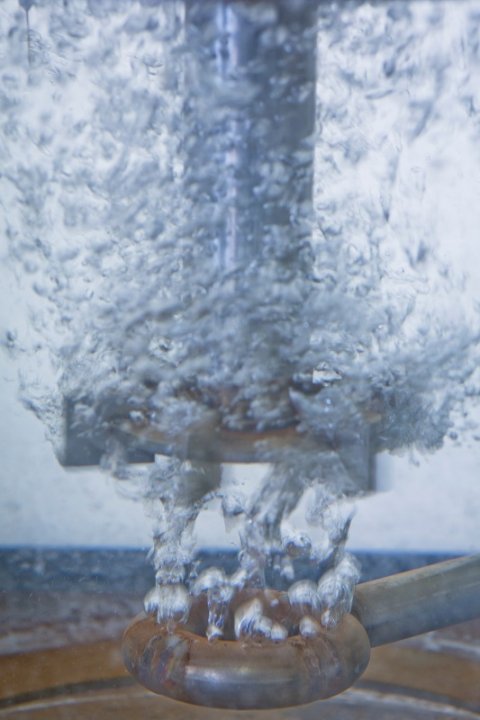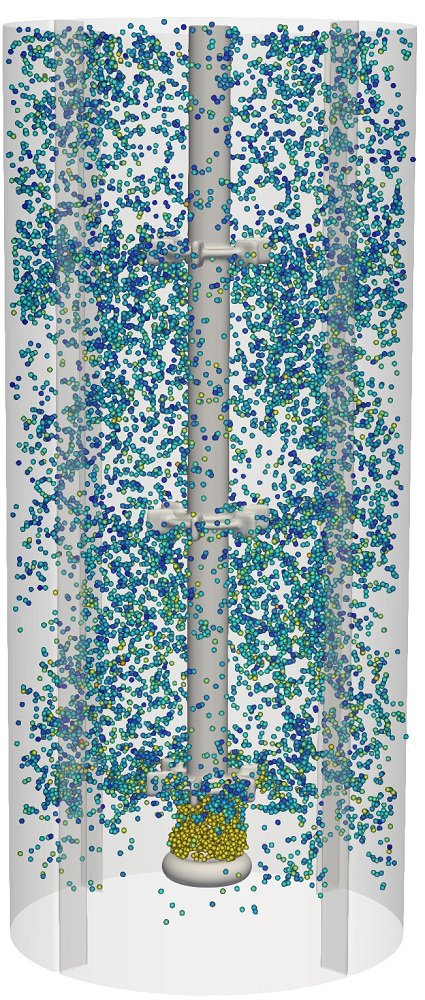
Source: TU Graz
News • MedTech
Turbo-charging pharmaceutical biotechnology simulations
New simulation technology developed by TU Graz is designed to make the production of biopharmaceuticals more efficient, cost-effective and comprehensible for manufacturers.
Demand for biopharmaceuticals is strong: biopharmaceutical active ingredients – in other words, genetically engineered drugs – accounted for seven of the ten top-selling medications in the world in 2018. And the proportion is set to rise, as biopharmaceuticals can be used to combat conditions such as multiple sclerosis and anaemia, as well as many forms of cancer and rare diseases, which cannot be treated with chemical and synthetic agents. But such efficacy comes at a price. While chemically produced medicines are “small molecules” that are relatively easy to manufacture and are available in tablet form, biopharmaceutical drugs usually comprise hundreds or thousands of atoms.
This makes biopharmaceutical manufacturing extremely complex – it requires microorganisms driving reactions in bioreactors, involves expensive experiments carried out on the basis of trial and error, and is based on empirical values. “At the moment, the biotech industry lacks in-depth process knowledge. People that the manufacturing process works, but they don’t know the reasons why or how exactly it functions,” explains Christian Witz of the Institute of Process and Particle Engineering at TU Graz.
Process knowledge – the key to manufacturing efficiency

Computer-based simulations are vital for enhancing process knowledge, and could also significantly speed up the scale-up from the lab to production scale. However, the simulation programmes currently available on the market are not suitable for routine application, as they take months to perform the necessary calculations, and call for expertise with running simulations, as well as substantial computing power.
This is where Christian Witz’s research comes in. He is working on a new, user-friendly and fast simulation software that is aimed at enabling process simulation to take root in the biopharmaceutical industry. “My system will cut simulation times from months to a matter of hours. It can be operated by people without simulation know-how and runs on standard commercial graphic cards.” The new software shortens the time needed for troubleshooting and promises more detailed insights into processes. This will help to make biopharmaceutical manufacturing more efficient. “Companies need to perform fewer experiments to make the step from the lab to industrial-scale production, saving anywhere between EUR 300,000 and EUR 1 million,” says Witz, pointing to the latest estimates.
End-to-end process simulation supports production processes

The new software, which has been used in industrial research since 2017, is based on simulation code that Witz developed for aerated and stirred bioreactors. For instance, the program simulates the movement of microorganisms in the reactor or the transport of dissolved oxygen released from air bubbles. As part of the ComBioPro project, Witz will integrate further algorithms into the software, which will allow for even more exact and user-friendly representation of physical and biochemical processes in bioreactors. Among other things, the aim is to partially automate the evaluation of raw simulation data, and to simulate very large air bubbles in a reactor. The simulation results will ultimately feed into decision-making processes for design and production. In turn, this would enable companies to simulate more projects in a shorter time, and carry out tests showing where and how productivity losses occur in a reactor.
This comes courtesy of the unique insights that the software offers into biopharmaceutical production processes, as Witz points out: “How can we create the bioreactor conditions in which the microorganisms are at their most productive? How does the speed of the agitator or the aeration rate influence the process? Where in the reactor do excessive shear forces have an impact on the microorganisms? The simulation software helps to answer these and other questions.”
Source: TU Graz
16.09.2019


